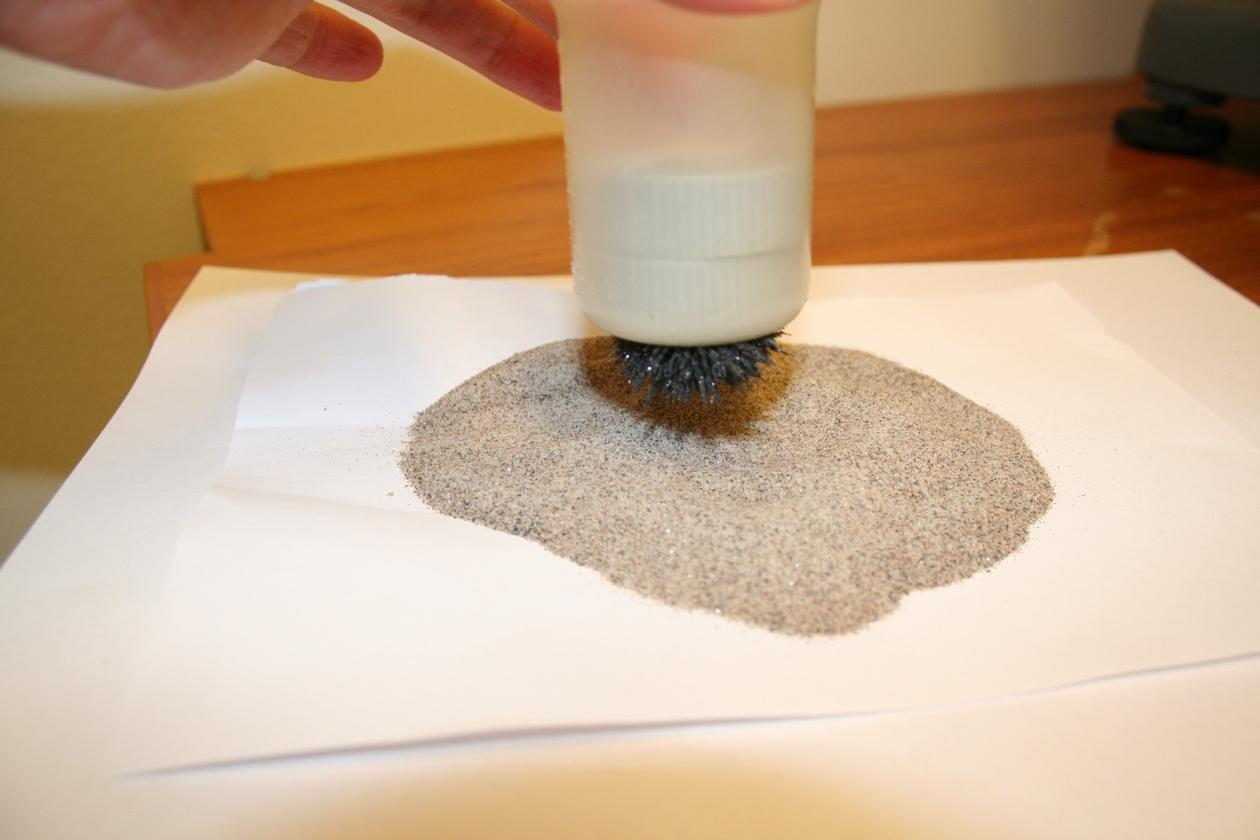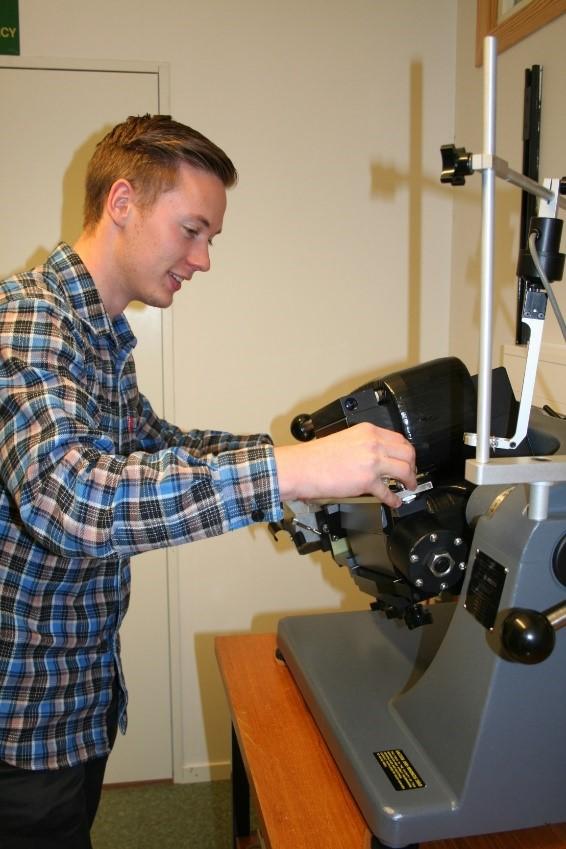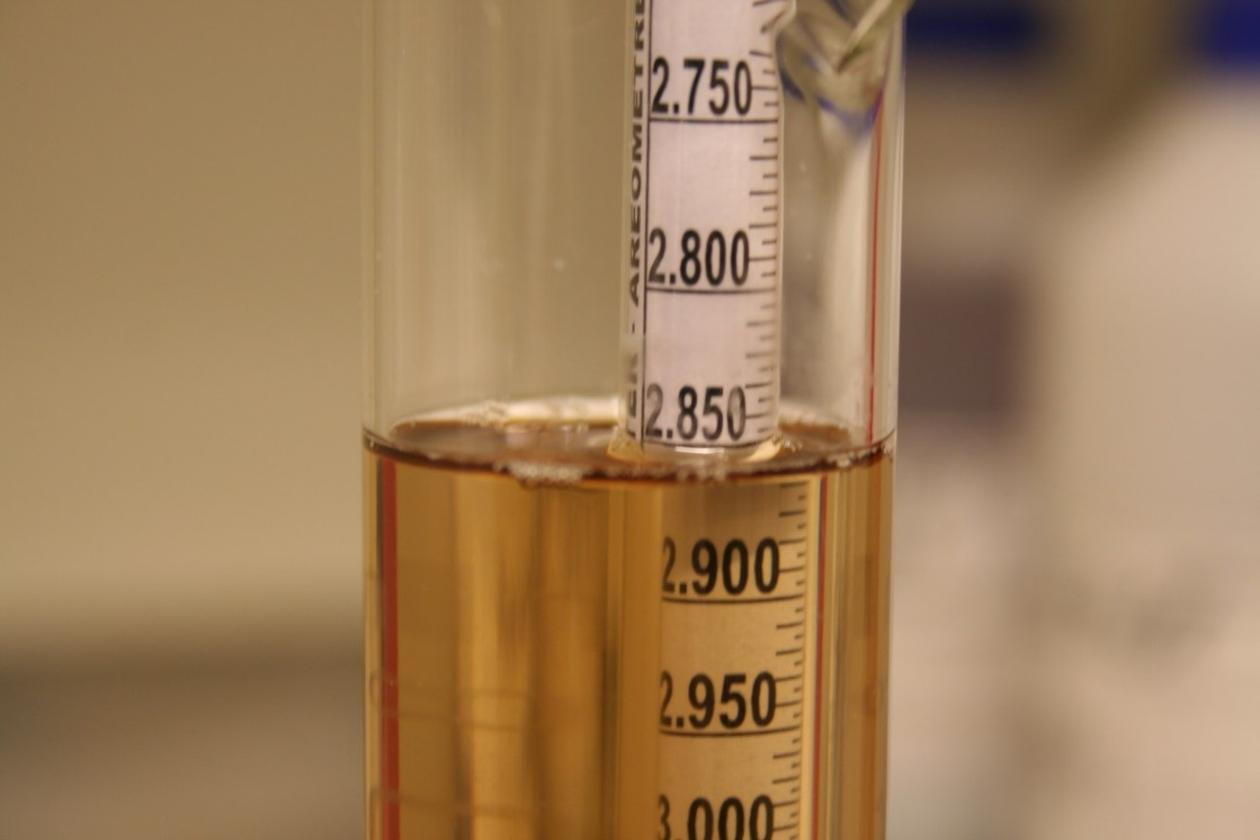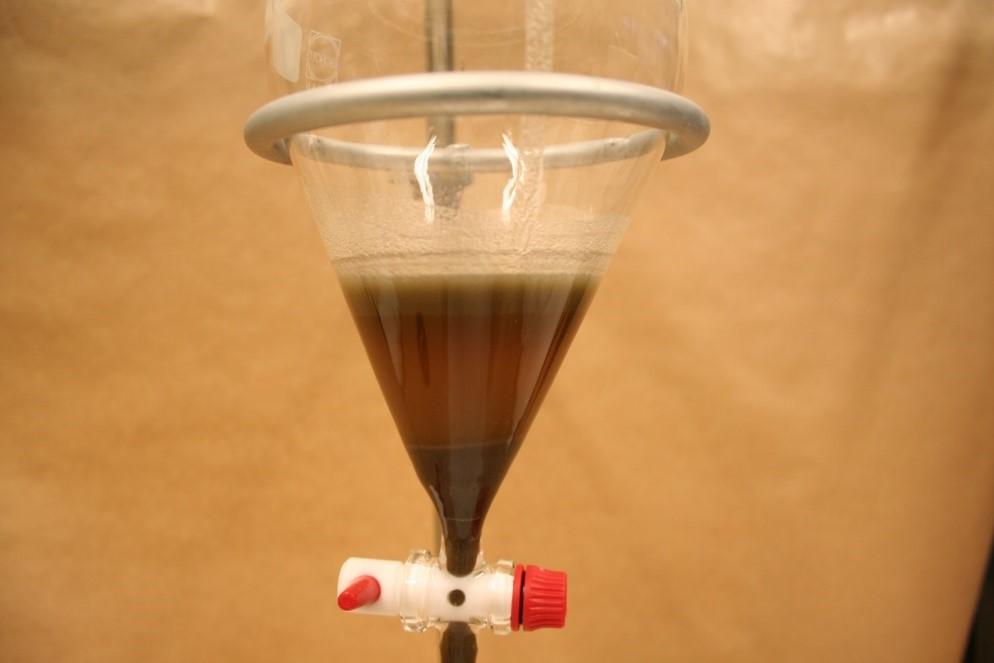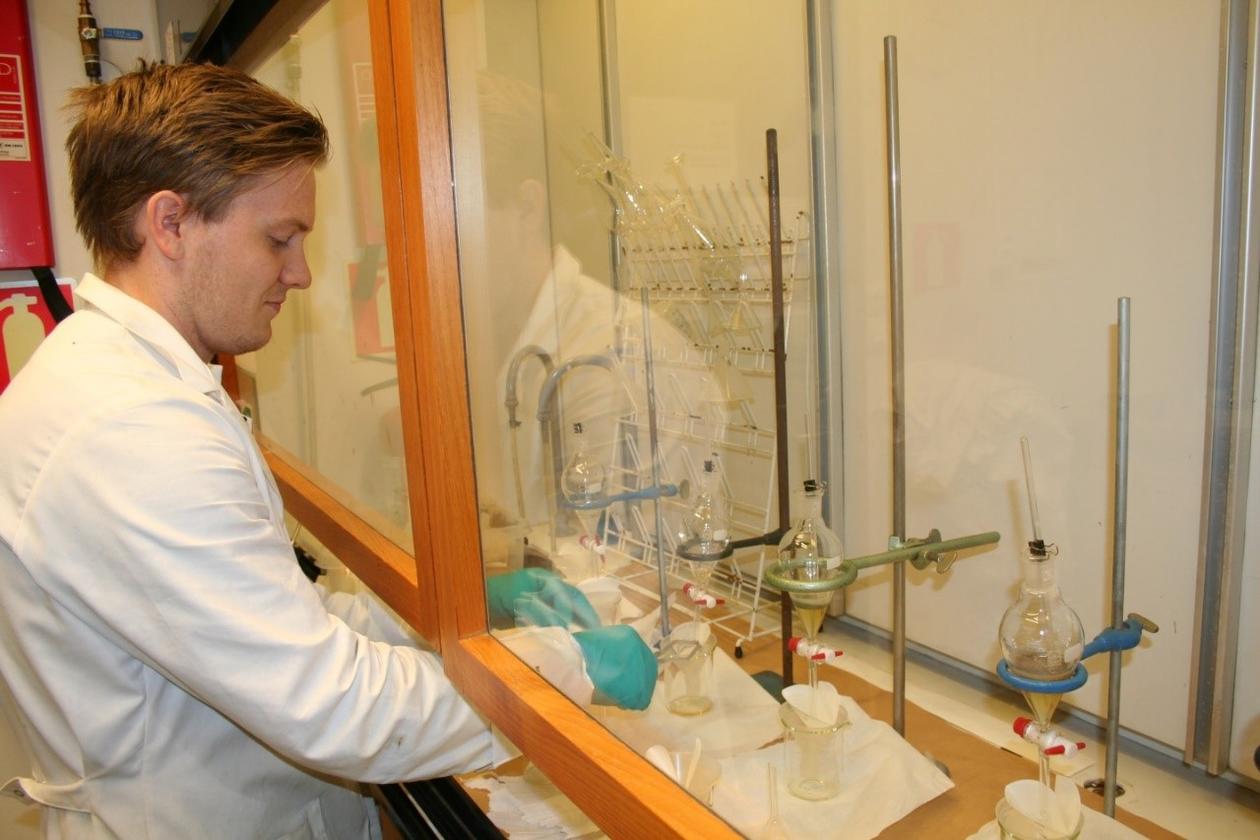Mineral separation laboratory
Main content
Three different types of heavy liquids and a magnetic separator (Frantz) can be found in the mineral separation room. This room is mostly used for separating heavy minerals - like zircon, monazite and apatite - from lighter minerals. Zircon and monazite are important minerals for U/Pb dating with the help of laser ablation and a mass spectrometer. Apatite is mostly used for fission track dating (thermochronology).
Frantz magnetic separator:
Magnetic separation is based on minerals` magnetic properties. Some of the largest and magnetic minerals (ferromagnetic minerals) are often removed via a handheld magnet before they are sent through the magnetic separator. Diamagnetic and paramagnetic minerals are separated via Frantz because of the way they interact with a magnetic field: paramagnetic minerals are attracted and diamagnetic minerals are repelled by an applied magnetic field. This way the minerals can be easily separated.
Heavy liquids:
LST, SPT, DIM Heavy liquids are used to separate minerals according to their density. LST (lithium heteropolytungstate) or SPT (sodium polytungstate) are heavy liquids where the density can be adjusted by adding (leads to lower density) or evaporating (leads to higher density) deionized water. A hydrometer measures the density. When a mixture of different minerals (every mineral has a certain density) is inserted into a heavy liquid, the minerals that have a higher density than the heavy liquid will sink while the minerals with a lower density than the heavy liquid will be floating on the top. This way an easy separation of the minerals can be achieved. LST and SPT are cleaned and recycled after their use. DIM (diiodomehtane) has a very high density (3.325g mL-1) and helps to separate the heavy minerals which were part of the heavy fraction during LST or SPT treatment. In our case, DIM helps to separate apatite from zircons.
SAMPLE REGISTRATION (must be filled in befor booking) here (english), here (norwegian)
